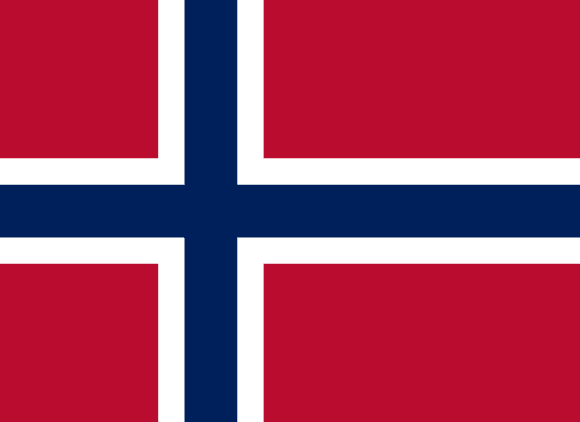Flag of Norway

The design of the Norwegian flag with the Scandinavian cross in the center is similar to the other Nordic flags. In case of Norway, the cross is blue with white framing, placed on a red background. The cross is not isosceles, it reaches the edges of the flag and the shorter arm is located closer to the left side of the flag. The flag is very similar to the Danish Danneborg, which reflects four centuries under the Danish rule. On the other hand, the blue cross points to the long-term ties to Sweden. The flag was designed in 1821 by Frederick Meltzer, but it was not adopted as a state flag until 1898. The colors of the flag that coincide with the French tricolor could be interpreted as an expression of the desire for independence that Norway did not reach until the beginning of the 20th century.
Country information
| Sovereign State | Yes |
|---|---|
| Country codes | NO, NOR (ISO 3166-1) |
| Official name | Kingdom of Norway |
| Capital city | Oslo |
| Continent | Europe |
| Member of | United Nations, NATO, Nordic Council |
| Population | 5 356 789 (2019) |
| Total area | 323 802 km2 |
| Highest point | Galdhøpiggen (2 469 m, 8 100 ft) |
| Lowest point | Norwegian Sea |
| GDP per capita | $ 81 697 (World Bank, 2018) |
| Currency | Norwegian krone (kr, NOK) |
| Calling code | +47 |
| Internet TLD | .no |


